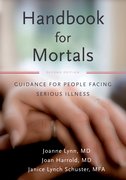By Janice Lynch Schuster
Like all the mothers and grandmothers I knew when I was a child, my grandmother had a purse that was more a small suitcase, from which she pulled any number of essential items: tissues and mints, powder and lipstick. For reasons that puzzled me — I was only 4 or 5 — she also carried two pairs of eyeglasses, one of which she used for distance, the other for reading. As far as I was concerned, eyes were eyes and glasses were glasses, and having to search for certain glasses for a specific activity made no sense. Yet whenever she misplaced her reading glasses, a frenzied search would ensue. Without them, she could not teach me to crochet or read me a story, play cards or follow a recipe. I hoped I’d never need two pairs of glasses. It seemed a confusing way to live.
When I was in my late 20s, my mother started to have trouble seeing print on a page. Soon she was at the drugstore purchasing $10 reading glasses; for a while, hoping to keep them corralled, she wore these glasses on a string around her neck. We teased her that she looked like an old woman (she was in her mid-40s), and eventually she bought several pairs, which she placed at strategic locations around the house: on her nightstand, near the kitchen sink, next to the television. I remember her fretting over needing the glasses, how she equated it with aging and what lay ahead. I thought it was silly.
Now it’s my turn. For years, I’ve needed, but not worn, glasses for distance. The weight of the bridge on my nose drives me crazy: I’d rather squint at a blurry world than tolerate eyeglass frames in the periphery. A few years ago, the eye doctor persuaded me to purchase a few pairs of reading glasses — they were on sale! — and prescribed progressive lenses, the kind with the bifocal built in, no tell-tale dividing line. I wore them sporadically. In a pinch, I put my glasses on. But mostly I made do with the eyes I had.
I was blind to my own aging, which is ironic, because I write about aging issues for a living. I know all of the dire statistics about what the future has in store, not just for me but for millions of other boomers with whom I’ll share, if I’m lucky, the decades to come. I write about multiple chronic conditions and how hard it is to navigate them, about growing nursing home populations and the decreasing availability of family caregivers. Frankly, it can be a little overwhelming and grim; I try to focus on the ways in which people come together in hard times, and how they support and cherish one another along the way.
But I haven’t really thought about it as something that would happen to me: After all, I’m 49, and I eat well, exercise and get plenty of sleep. I always expected my body to go on forever. Until the other night, that is, when I bought a new pair of glasses.
I liked a certain frame, and it was too small for a bifocal. I opted to have it made for distance only — the frames were so cute! So youthful! I look good sitting in a crowd, looking up at a movie screen. But the glasses are useless when I try to read newspaper headlines, sign a school form or check my texts. My eyes struggle to focus but simply cannot. So I am relegated to having two pairs of glasses: one for distance and the other for reading. I have a pair on my nightstand and a pair on my desk. I’ve switched to a bigger purse, too.
It hits you all of a sudden that you are, in fact, only passing through. Bit by bit, the body does its work and comes to its end. There is no stopping it, for all the millions we spend on antiaging potions and promises, on cosmetic surgery and quick weight-loss gimmicks. For most of us, the future promises plenty of time with family and friends, time to pursue dreams and fantasies. But it also promises these small reminders that we will not be here forever.
Janice Lynch Schuster is Senior Writer for Altarum Institute, where she specializes in writing about health care and public health. She is co-author of Handbook for Mortals: Guidance for People Facing Serious Illness.
This article appears courtesy of The Washington Post.
View more about this book on the ![]()
![]()




Recent Comments
There are currently no comments.